上教堂
Upper Church
建築與空間設計類 最佳設計獎
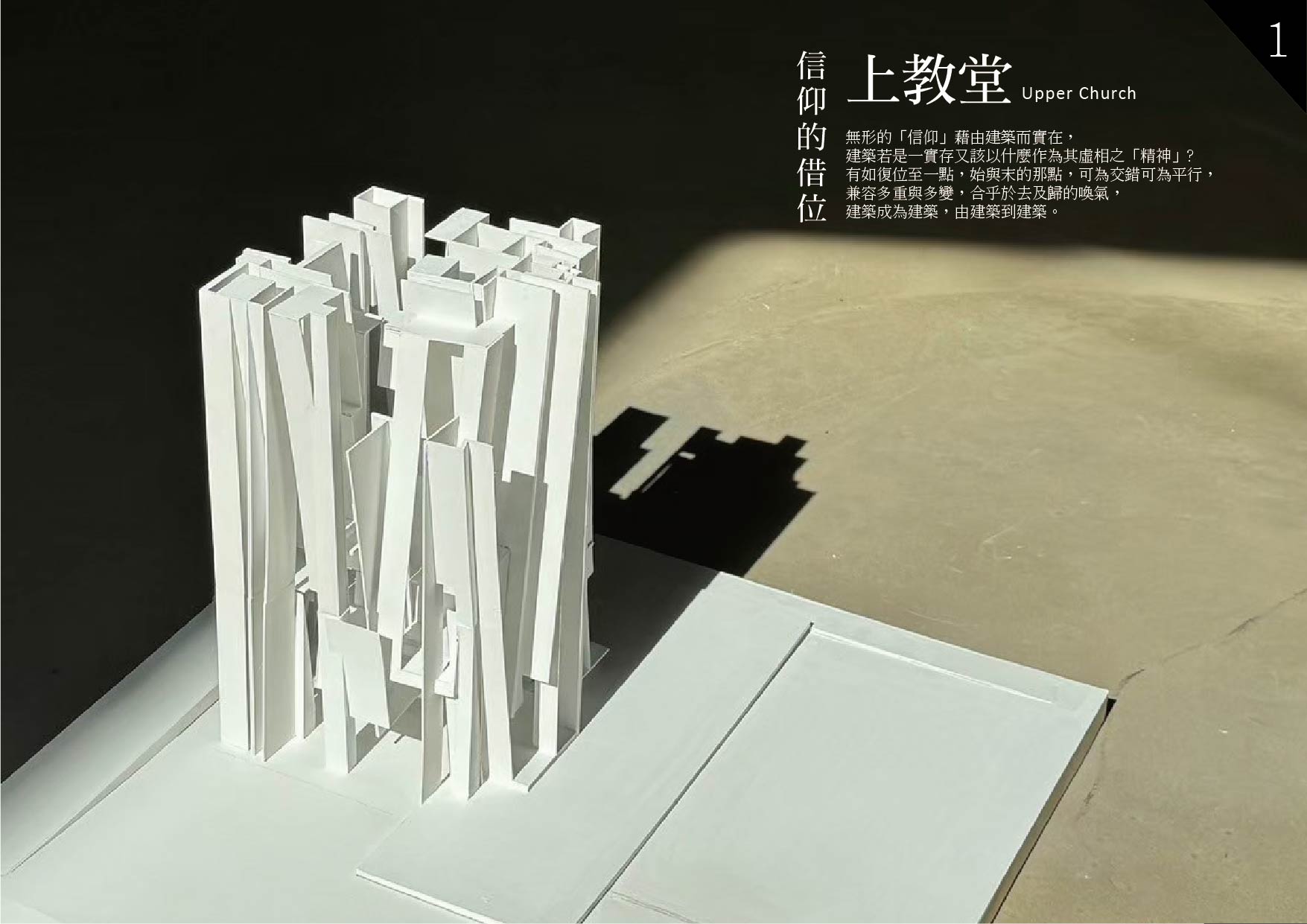
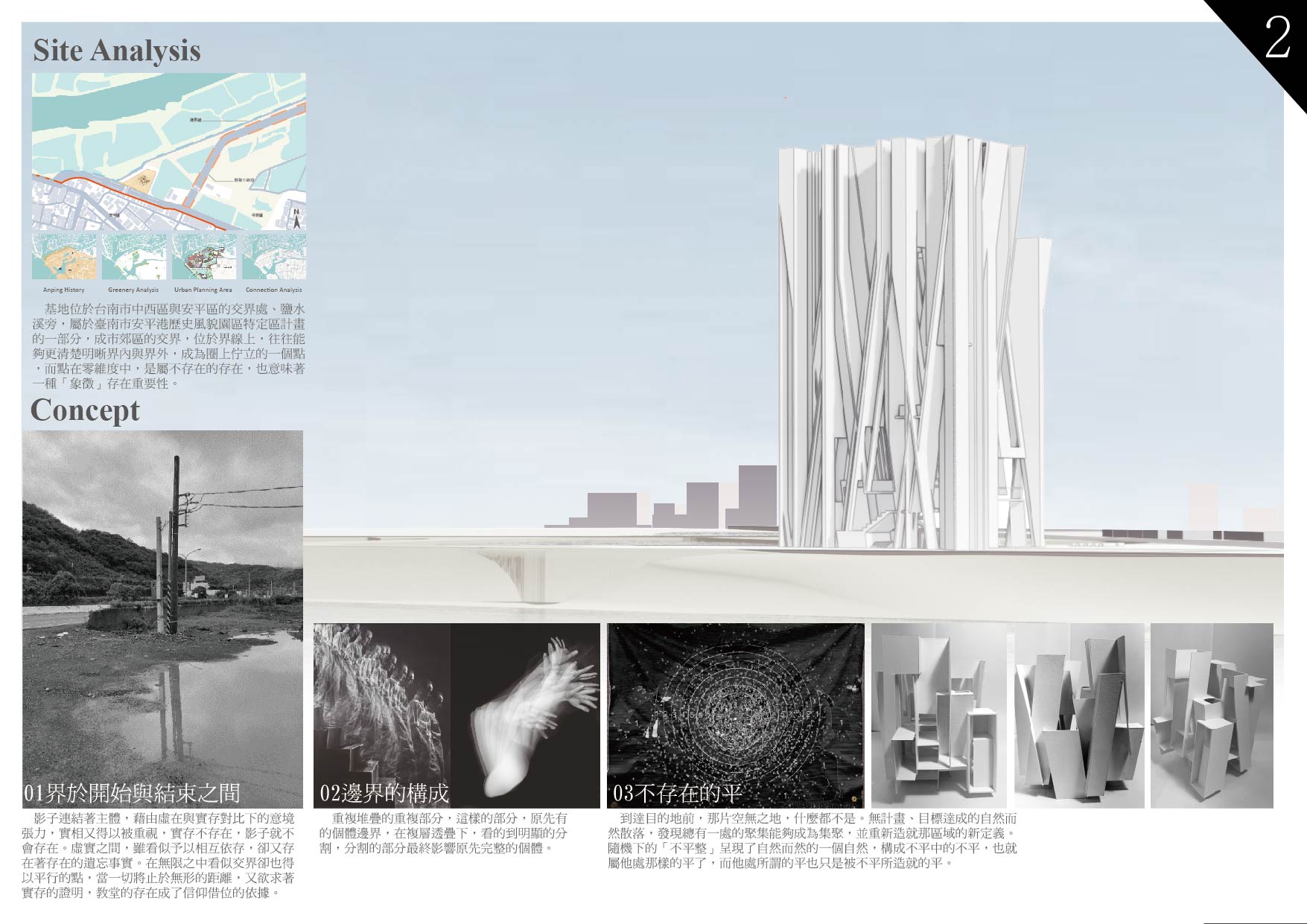
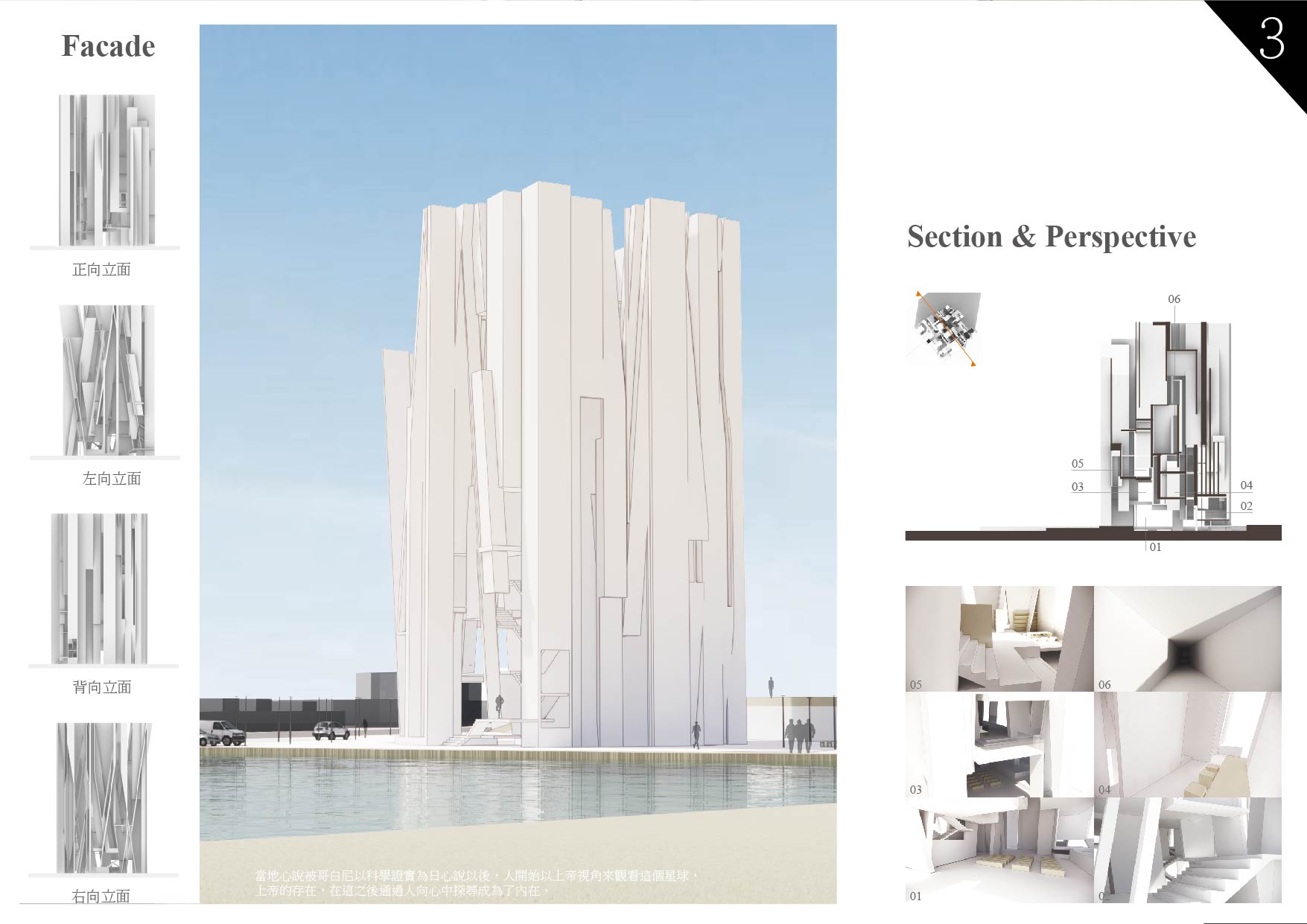
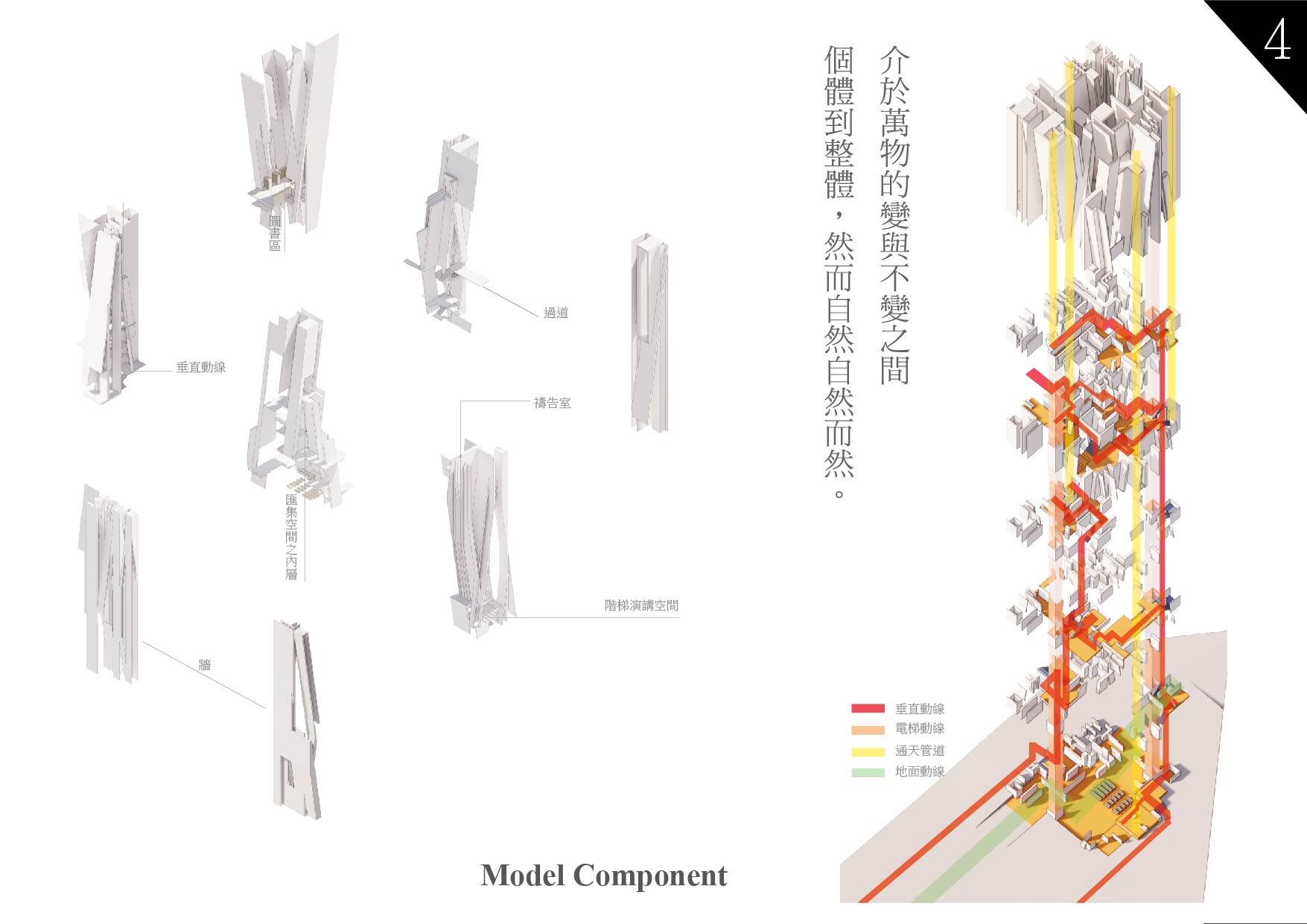
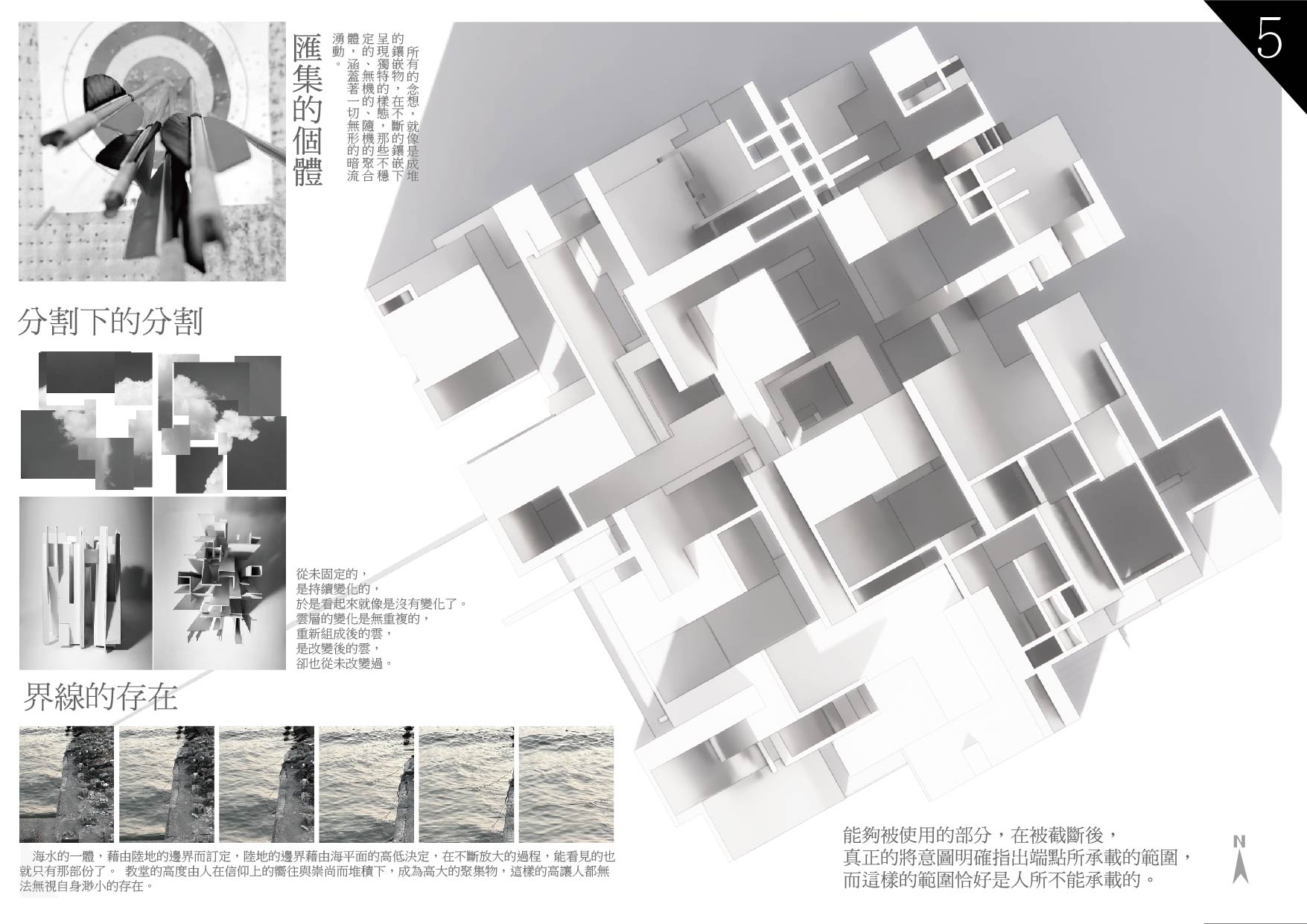
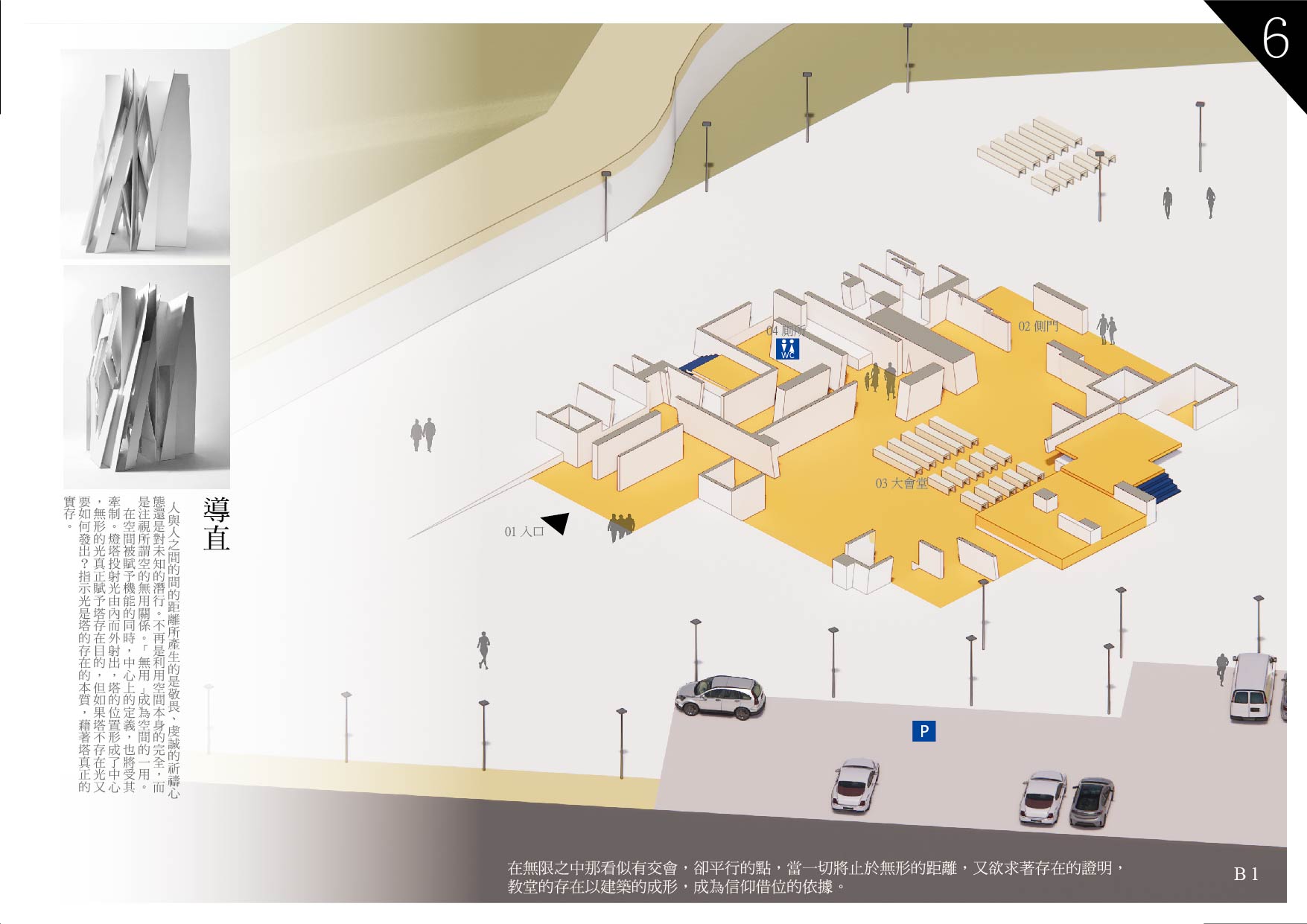
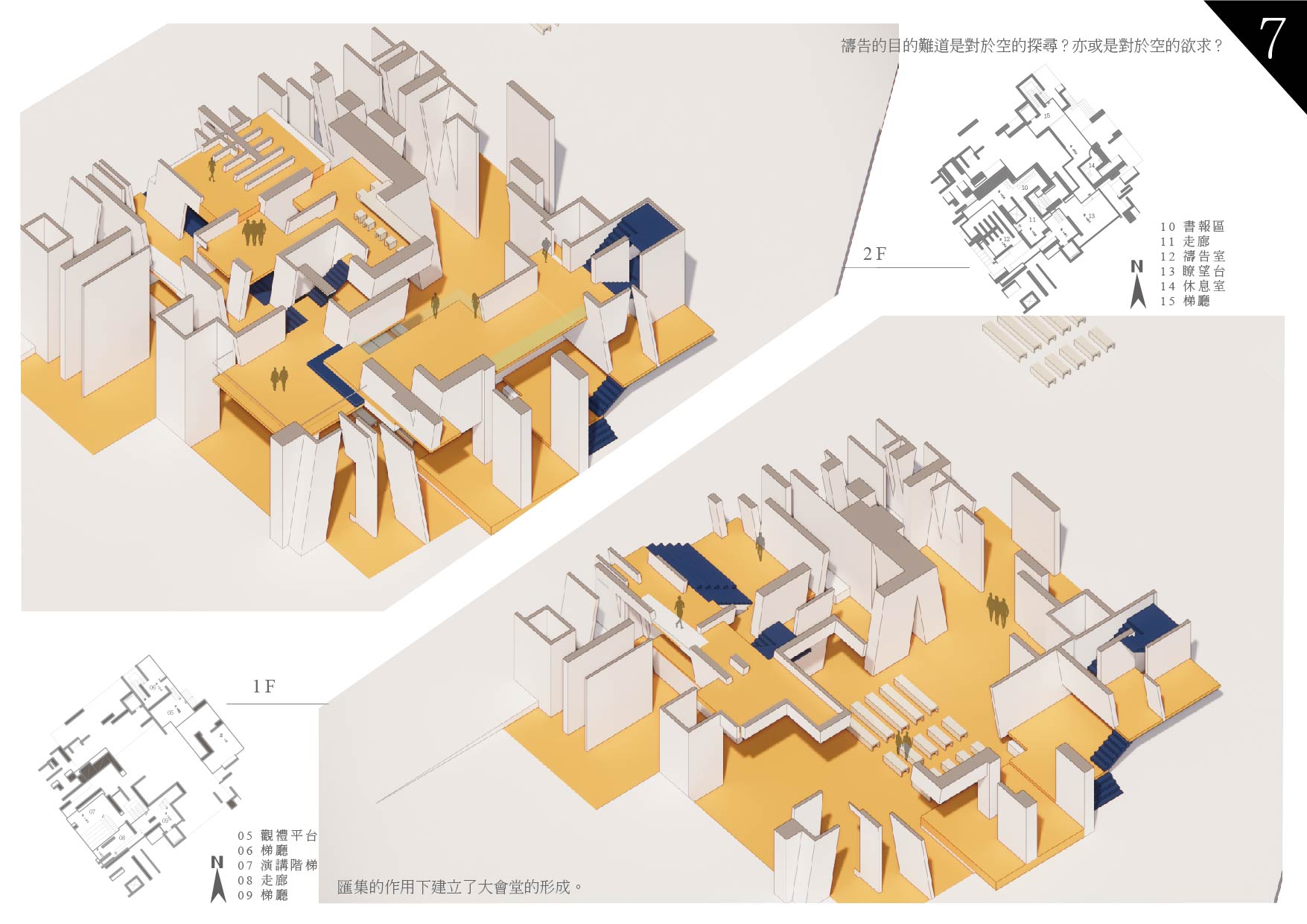
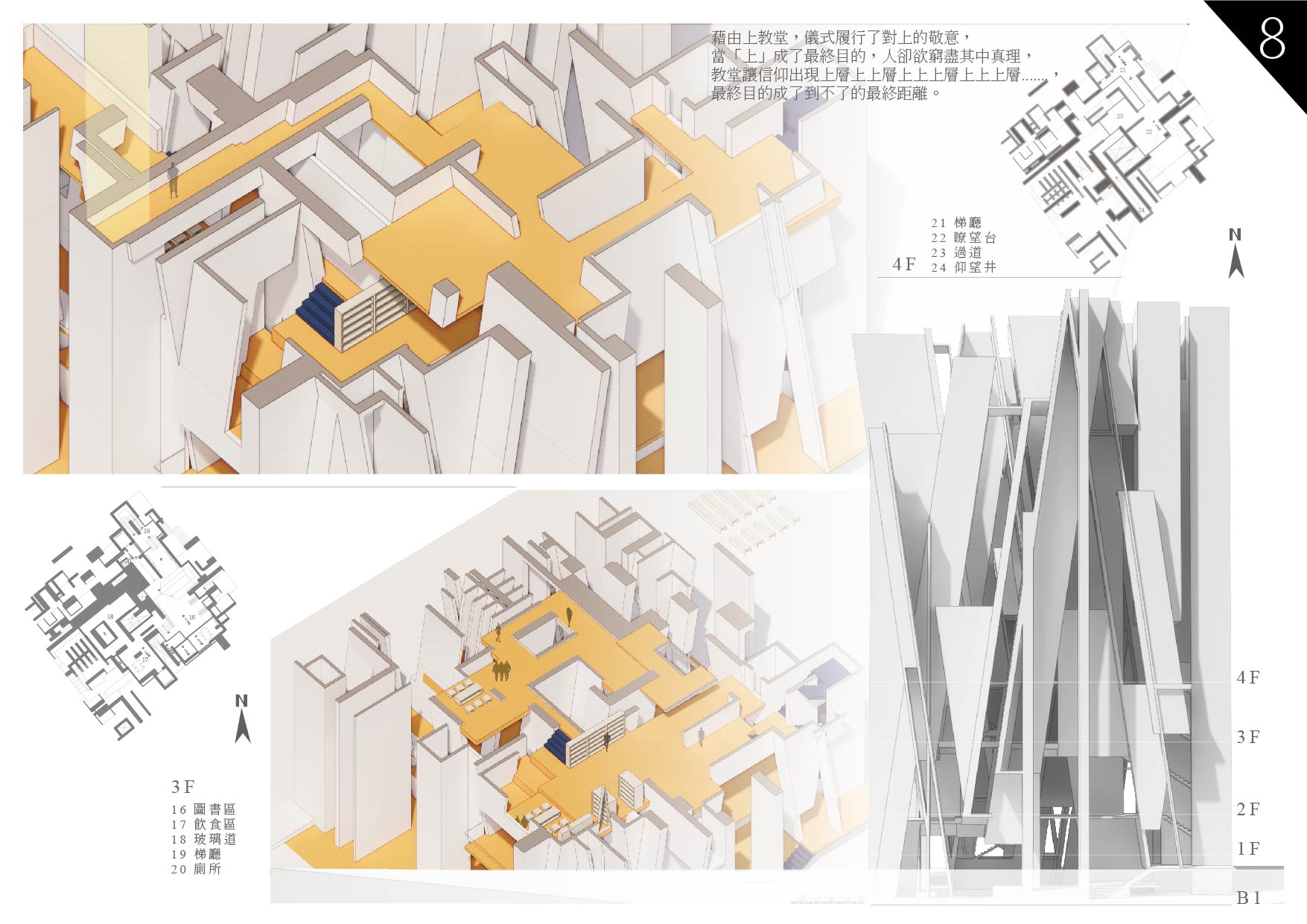
無形的「信仰」藉著教堂的存在而實在,
信仰本身的無形,因此被界定出一有形的輪廓,
歷經時代更迭,不斷的修繕下,回歸至本處,而這樣的回歸也重新塑造了一個新的有機形式。
建築若是一實存又該以什麼作為其虛相之「精神」?
有如復位至一點,始與末的那點,可為交錯可為平行,兼容多重與多變,合乎於去及歸的喚氣,建築成為建築,由建築到建築。
「信仰」在地心說被哥白尼以科學證實為日心說以後,人開始以上帝視角(外在)來觀看這個星球,上帝的存在,在這之後通過人向心中的探尋成為了內在,最終人意識到能夠被使用的部分,在被截斷後,真正的將意圖明確指出了端點所承載的範圍,而這樣的範圍恰好是人所不能承載的。
藉由在地面的占據,借建築一體,聚集、豎立、匯集,密度產生的空間,巨大的個體的不規則構成,接觸地面的同時產生的陰影,也滿足了人依賴的欲求。
Upper Church
The intangible "faith" becomes tangible through the presence of the church,
The intangible nature of faith itself is thus defined by a tangible outline,
Through the changes of time and continuous repairs, it returns to its origin, and such a return also reshapes a new organic form.
If architecture is a tangible existence, what should be its "spirit" as its intangible aspect?
Like returning to a point, the beginning and end point, which can intersect or run parallel, accommodating multiplicity and variability, conforming to the calling of departure and return, architecture becomes architecture, from architecture to architecture.
After Copernicus scientifically proved the heliocentric theory, people began to view this planet from the perspective of God (external). The existence of God subsequently became internal through people's exploration. Eventually, people realized the part that could be utilized. After being severed, it truly pointed out the scope of the endpoint carried, which is exactly what humans cannot carry.
By occupying the ground, borrowing from architecture, gathering, erecting, and congregating, the space produced by density, the irregular composition of huge individuals, and the shadows generated when touching the ground also satisfy human desires for dependence.
台南藝術大學 建築藝術研究所
(一年級) 指導老師 王為河